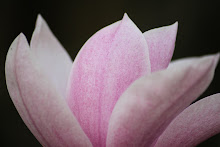Semiotics is the study of sign systems or images. Each person has a different view on what they see so the way one person sees an object/image, may be different to someone else's interpretation of the same object/image.
Semiotics allows media texts to be taken apart or de-constructed to show its meaning. Semiotics also shows that meaning develops at the simplest levels.
A signifier would be the word or object itself. A signified is the meaning to that particular person. This means that the signified would change from person to person. For example, 'rose' would be the signifier, where as a picture of the rose could be the signified.
A denotation is a single, basic or literal meaning from the original object, almost 'say what you see' points. A connotation is a suggested level of meaning from the object. The connotations often lead on from the denotations originally drafted from the object as well as having personal opinions involved. If someone sees an object negativity, this may come across or be reflected in the connotations.
Wednesday, 20 January 2010
Monday, 4 January 2010
Photo Journalism
Photo journalism is the idea of being able to create a still frame of reality, as it happens. This has meant that more and more people have been able to view what was happening at the same time.
Henri Cartier-Bresson is supposedly known as the 'godfather' of photojournalism. By being able to create stills in reality without pausing to think. Henri would see something that appealed and waiting for an extra character, i.e a bicycle, to pass through the frame which in turn gave the picture a sense of movement and freedom.
Henri Cartier-Bresson first used a Leica camera, which allowed one eye to see through the camera and the other being able to see what else was going on, possibly outside of the frame. This meant that Henri was able to see something appealing, and wait for the frame shot to be improved. One of his most famous pictures was the Behind the Gare St. Lazare, Paris. The movement and freedom shown in pictures is expressed here more then others, the movement of the person moving forward; jumping over the puddle is shown by the position of his legs as well as his second foot 'hovering' above the puddle. Freedom is shown by the ripple marks in the puddle, spreading out until the waters edge.

The decisive moment is where the shutter button is pressed at exactly the right time, to get the best picture from the surroundings and objects. This is partly influenced by the few seconds before the moment.
Henri Cartier-Bresson is supposedly known as the 'godfather' of photojournalism. By being able to create stills in reality without pausing to think. Henri would see something that appealed and waiting for an extra character, i.e a bicycle, to pass through the frame which in turn gave the picture a sense of movement and freedom.
Henri Cartier-Bresson first used a Leica camera, which allowed one eye to see through the camera and the other being able to see what else was going on, possibly outside of the frame. This meant that Henri was able to see something appealing, and wait for the frame shot to be improved. One of his most famous pictures was the Behind the Gare St. Lazare, Paris. The movement and freedom shown in pictures is expressed here more then others, the movement of the person moving forward; jumping over the puddle is shown by the position of his legs as well as his second foot 'hovering' above the puddle. Freedom is shown by the ripple marks in the puddle, spreading out until the waters edge.

The decisive moment is where the shutter button is pressed at exactly the right time, to get the best picture from the surroundings and objects. This is partly influenced by the few seconds before the moment.
Subscribe to:
Comments (Atom)
